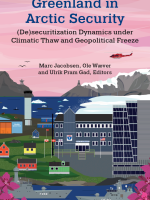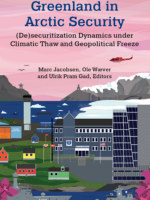Greenland in Arctic Security - independence, climate change and nuclear missiles
As the Arctic is getting warmer, ice at sea and on land is melting. Great powers appear ready to conflict over resources appearing from under the ice. Science tells us about this climatic thaw already happening; much commentary and great power strategies want us to believe that a geopolitical freeze is inevitable.
Either way, the Arctic region we have known since the end of the Cold War may not be recognizable for much longer. Within these tectonic changes, Greenland is home to the one polity most difficult to fit in traditional categories of international relations theory: the world’s largest island formally belongs to Denmark, but the political autonomy of the Greenlandic nation as well as American strategic engagement make Danish sovereignty ambiguous.
Moreover, Greenland is the most dynamic piece in the new Arctic jigsaw puzzle: insisting on a course toward statehood, hoping to be able to juggle relations to more metropoles without falling unilaterally under U.S. supremacy. Hence, for a nation of 56,000, Greenlandic security politics might prove surprisingly disruptive, if not to Arctic security as such, then for received ideas of the region and of how security unfolds.
This volume offers a fuller and more precise understanding of where Greenland wants to go, but also the limitations to this ambitious polity put by the new Arctic. The contention is that even if Greenland presents us with a unique clash of scales and ambitions, the way Greenland twists Arctic security provides valuable lessons for how we should approach security in other places off the beaten path in terms of geophysical territory, geopolitical position, colonial history, formal sovereignty, and political identity.
To better grasp the role of Greenland in Arctic security—both moving targets—this volume reboots our understanding by presenting an analysis that identifies security dynamics from scratch rather than accepting established labels. Specifically, the authors look for processes of securitization, that is, how issues and identities in and related to Greenland are elevated to a privileged security agenda, and processes of desecuritization, that is, how these issues and identities may again be allowed back into the humdrum of normal politics or fade to uncontroversial background.
DIIS Experts



